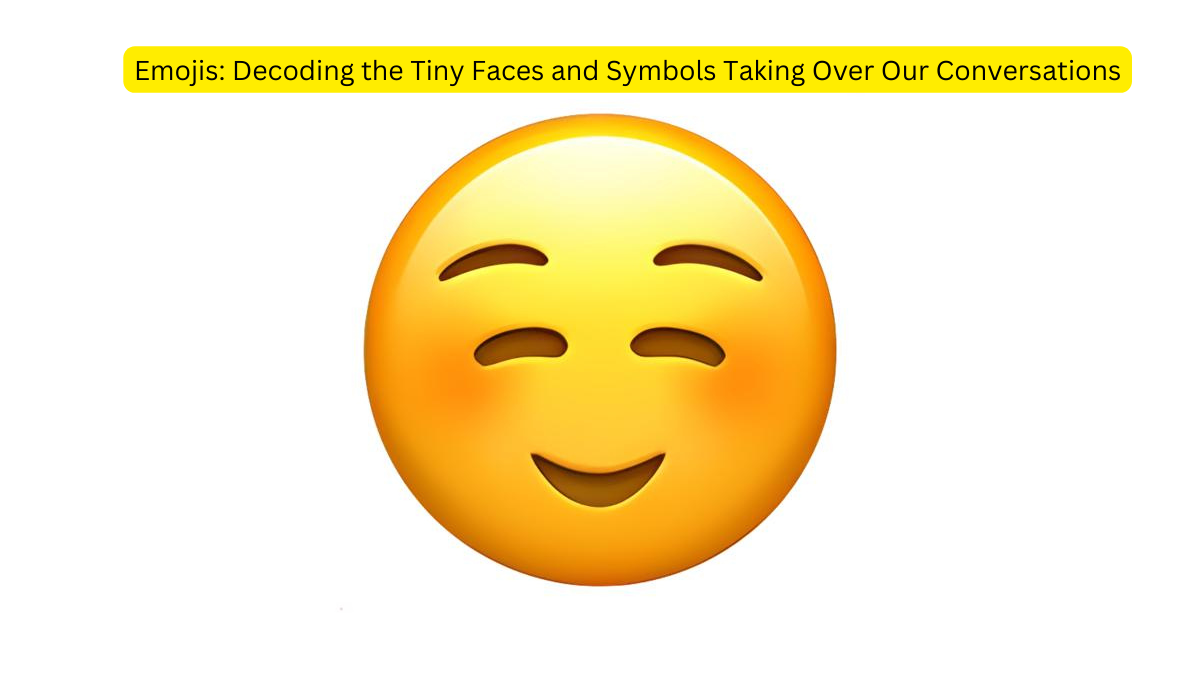They’re everywhere you look – in text messages, social media posts, and even work emails. These little digital icons, known as emojis, have become an undeniable part of our communication. But with hundreds of emojis available, deciphering their meanings and using them effectively can be a challenge.
Fear not, fellow communicator! This guide will equip you with the knowledge to navigate the world of emojis, understand their nuances, and express yourself with confidence. Get ready to unlock the secrets of those tiny faces and symbols that have become a global language.
Beyond the Smiley: A Universe of Emoji Meanings
Emojis started as simple smileys, but they’ve evolved into a diverse vocabulary. Today, you’ll find emojis representing emotions (happy , sad , angry ), objects ( for party poppers, ✈️ for airplane), actions ( for waving, ♀️ for running woman), and even food ( for pizza, for taco).
The beauty of emojis lies in their ability to add humor, emotion, and context to our messages. Imagine a text message saying “See you later!” It’s a straightforward statement, but adding a smiley completely changes the tone, making it more friendly and inviting.
However, emoji meanings can be subjective and depend on context. For example, the thumbs-up emoji can signify approval, agreement, or even a simple “okay.” Knowing the context of the conversation is crucial to interpreting emoji meanings accurately.
Decoding the Emoji Dictionary: Tips for Understanding Emojis
So, how do you navigate this ever-growing emoji dictionary? Here are some helpful tips:
- Consider the context: Always think about the surrounding text and conversation when interpreting an emoji.
- Think culturally: Emoji meanings might vary across cultures. The “okay” hand sign () can be offensive in some cultures, for example.
- Beware of double meanings: Some emojis have multiple interpretations. For instance, the eggplant emoji can be used literally for the vegetable, but also has a more suggestive meaning in some contexts.
- Look it up! If you’re unsure about an emoji’s meaning, don’t hesitate to consult online resources like emoji dictionaries or ask the person who sent it.
Mastering the Art of Emoji Use: Express Yourself with Confidence
Now that you’re equipped to understand emoji meanings, let’s explore how to use them effectively:
- Use emojis sparingly: Overusing emojis can dilute their impact and make your message seem cluttered.
- Choose the right emoji: Pick an emoji that accurately reflects the emotion or meaning you want to convey.
- Consider your audience: Be mindful of the recipient’s age, background, and comfort level with emojis. Formal communication might not be the best place for playful emojis.
- Don’t rely solely on emojis: Emojis are meant to enhance communication, not replace it. Use them alongside clear and concise text.
Following these tips will help you use emojis confidently and effectively, adding a touch of personality and nuance to your digital interactions.
Conclusion: Mastering the Language of Emojis
Emojis are a powerful tool for expressing ourselves in a concise and playful way. By understanding their meanings and using them strategically, you can enhance your communication and connect with others on a deeper level. So, go forth, explore the wonderful world of emojis, and don’t be afraid to add a little smiley face or two to your next message!
Frequently Asked Questions (FAQs)
1. Is there a universal emoji dictionary?
There isn’t a single, universally agreed-upon emoji dictionary. Emoji meanings can vary slightly depending on the platform you’re using and cultural context.
2. Are there “old-fashioned” emojis that are no longer cool?
While some emojis might feel less trendy over time, there’s no hard and fast rule about what’s cool or not cool. Use emojis that you feel comfortable with and that suit the context of your communication.
3. Can using emojis come across as unprofessional?
In some very formal communication settings, like business emails, it’s best to avoid emojis altogether. However, in most casual work environments, using emojis sparingly and appropriately can be a great way to add personality and build rapport with colleagues.
4. Where can I find new emojis?
New emojis are released regularly by the Unicode Consortium, the organization that standardizes emojis. You can find updates on their website: https://home.unicode.org/emoji/ . However, it might take some time for new emojis to be available on all platforms.

